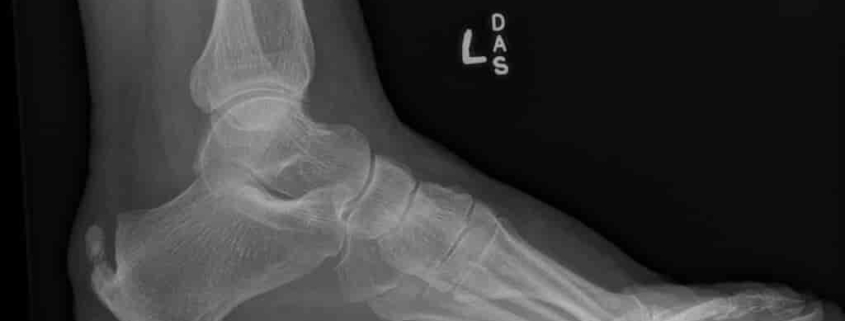
Haglund’s Deformity
Overview
Haglund’s Deformity, often referred to as ‘pump bump’, is a bony enlargement on the back of the heel that can lead to painful bursitis, a condition caused by inflammation of the bursa. This deformity affects both males and females, especially those who often wear shoes with rigid backs, such as pumps, hence its nickname.
Types
Since Haglund’s Deformity does not involve any form of categorization, it’s not divided into types or subtypes. However, its severity can range from minor irritation to severe pain that interferes with daily activities, depending on the size of the bony enlargement and the level of inflammation in the bursa.
Causes
The exact cause of Haglund’s Deformity can vary, but it is often linked to:
-
- Genetics: The shape of your heel bone can make you more susceptible to the condition.
-
- Shoes: Wearing shoes with rigid backs can put pressure on the back of your heel.
-
- Walking Style: A high arch or tendency to walk on the outside of your feet can lead to Haglund’s Deformity.
Symptoms
Key symptoms of Haglund’s Deformity include:
-
- A noticeable bony bump on the back of your heel
-
- Heel pain
-
- Swelling around the bony enlargement
-
- Redness or itching
Diagnosis
Haglund’s Deformity is typically diagnosed during a physical exam. A doctor will examine your foot, checking for a bony enlargement on the back of your heel and noting any pain or inflammation. To confirm the diagnosis, your doctor may also recommend X-rays or other imaging tests.
Treatment Options
Treatment for Haglund’s Deformity generally starts with nonsurgical methods:
-
- Switching to softer shoes to reduce pressure on the heel
-
- Physical therapy, which may involve exercises to strengthen the muscles around the ankle and heel
-
- Icing the affected area to reduce swelling and relieve pain
-
- Using custom orthotic devices or heel pads to lessen the pressure on the heel bone
If conservative treatments do not provide relief, surgical intervention may be considered. This typically involves removing the bony enlargement and reducing the inflammation in the bursa.
Living With Haglund’s Deformity
Managing Haglund’s Deformity involves some lifestyle changes:
-
- Opting for shoes with a soft heel
-
- Regular icing of the heel to reduce inflammation
-
- Performing exercises to strengthen your foot and ankle muscles
Taking these steps can help manage the pain and reduce the chances of the deformity worsening.
When to Seek Help
You should see a healthcare provider if you experience chronic heel pain or swelling, redness around the heel, or have problems walking due to discomfort. While Haglund’s Deformity is generally not a medical emergency, ignoring symptoms can lead to increased pain and potential complications, like chronic bursitis. Therefore, it’s advisable to seek help as soon as you notice any symptoms.
While Haglund’s Deformity can certainly be frustrating and at times painful, understanding the condition and its management options can make living with it manageable. Whether you’re newly diagnosed or seeking further information, remember that effective treatment and lifestyle adjustments can go a long way in ensuring your daily life is not affected by this condition.
